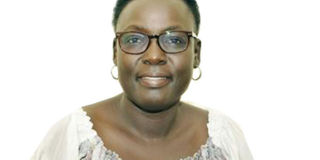Educate the girl-child to achieve sustainable development

Early last month, this newspaper carried a story of a 14-year-old girl who was spearheading the fight for children’s rights. In the story, Jennifer Faith Akello made it clear that from what she was doing, she wanted to use that experience to become a Member of Parliament because she has the desire to speak for her people in Abim District.
Akello’s experience goes to show that when a girl is empowered, especially through education, she can do more than what society expects of her.
There are a number of interventions that aimed at empowering children where girls are encouraged to participate because of the power they have to change society. Some of these include the child rights clubs, debating clubs, child parliaments and adolescent radio talk shows, among others.
By empowering girls, you are giving them the key to economic growth, political stability and social transformation.
This is because girls who will a few years down the road become women, know what is good for their families.
As we look into the unique needs and place of girls in our communities, it is important to understand that empowering them right from when they are young through education, teaching them about their rights and how to defend themselves through the right avenues, we shall all be contributing towards an empowered girl by 2030.
I vouch for education as the best avenue of empowering a girl because a 2011 research dubbed ‘The benefits of educating girls in developing countries with a case study in Livingstone, Zambia’, indicates that while the economic benefits of educating a girl are the same as when you educate a boy, the social benefits of educating a girl are greater than when you educate a boy.
Additionally, education is an entry point to opportunities and also a woman’s educational achievements have positive effects which trickle down across generations.
Therefore, by enforcing the girl-child education, government will be making an important investment for the future of the country as a factor in reducing poverty and achieving sustainable development goal 4.
More so, education is an important tool in equipping girls with knowledge, skills and the self-confidence they need to participate in the development process. Now is the time for all of us to accept the fact that we can only achieve sustainable development when girls and boys have equal opportunities to reach their full potential.
Keeping girls in school and providing them with a good education that can prepare them for the future continues to payoff down the road, including better health outcomes and better financial stability for the girls and their families plus the communities they live in.
The advantage we have in Uganda is that we have a strong legal structure and a comprehensive set of good education policies that aim at protecting the right to education as a human right first in the constitution and in a number of international conventions that we have ratified such as the United Nations Universal Declaration of Human Rights, the convention on the rights of the child and the African Charter on the rights and welfare of the child, among other policies. But there are many factors that hinder girls’ and women’s education in Uganda.
A 2010 report from the United Nations Educational, Scientific and Cultural Organisation (UNESCO) dubbed, ‘School Dropout: Patterns, Causes, Changes and Policies’ indicates that some of the major causes of school dropouts are lack of interest, pregnancy, early marriages, hidden costs at school and family responsibilities. More so, teenage pregnancy stands at 25 per cent and 49 per cent of girls are married before they make 18 years.
Therefore, as we focus on an empowered girl by 2030, government, local council leaders, clan leaders and families in general should find means of doing away with disempowering social-cultural beliefs, including that the woman’s place is in the kitchen; women are not supposed to say anything during a social gatherings; and certain jobs are not meant for women.
Additionally, all stakeholders need to work hand-in-hand to get rid of structural barriers in the economic, social and political spheres that reinforce inequality among girls and women. This is because these obstacles are the major causes of violence against girls and women and hinder sustainable development.
By dealing with such issues, we shall have dealt with customs that deny girls and women the right to education, own land, inherit property, attend school, get into gainful employment and avoid job discrimination.
We shall also have managed to change the attitude towards the girl-child because these girls are the women of tomorrow and from experience in the different SAO areas of intervention, we have found out that women have the potential to change their own economic status and that of the communities they live in. Therefore, if we empower them right from when they are girls, then the future is bright.
Former US president Barack Obama once said: “When women succeed, nations are more safe, secure and prosperous.” I believe these are some of the core things we need in Uganda and fortunately, we have a clear path through educating the girl child.
Ms Soobi is the national director
Share An Opportunity Uganda (SAO U)




